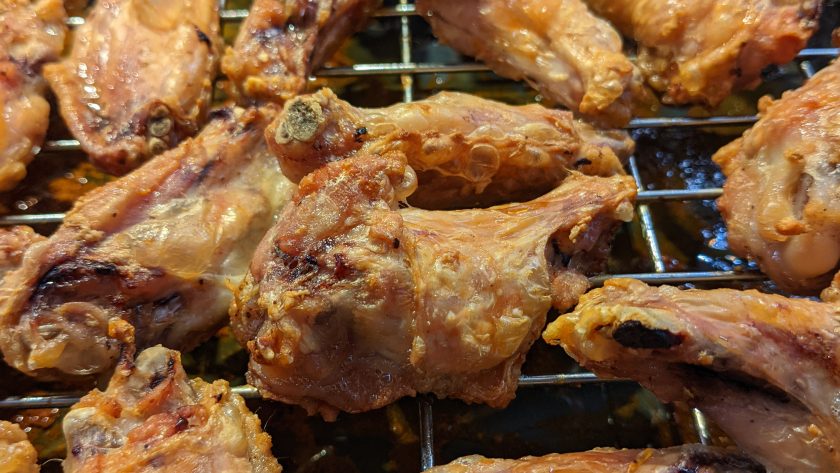If there’s one thing that seems to go hand in hand (that shouldn’t) it’s food poisoning and barbecues. One of the most common causes is undercooked meat, the other is cross contamination. The latter is easily preventable, wash your hands and utensils after handling raw meat and fish. The former, cooking temperatures is slightly more complex.
It’s easy to assume that cooking time on a barbecue will be like an oven or a pan on the hob but as the temperature can be affected by the fuel, weather conditions and various other factors it important that you throw this preconception away. Cooking to temperature is the only way to safely cook on the barbecue.
What about meat colour?
Unfortunately, studies have shown that the colour of meat during cooking does not show that pathogens on the meat have been destroyed this is particularly true of minced beef particularly in hamburgers. [source]
So, what is the answer?
A temperature probe. Temperature probes come in all shapes and sizes, with one or ever four probes. My personal preference is my Ink bird IBT-2X, a two probe Bluetooth model that can connect to my phone as well as monitor the grill and food temperature when I do large cooks like whole chickens or legs or lamb.
Used properly a temperature probe can let you know when food is cook to a safe temperature make it safe to eat but also preventing it from being overcooked, something that is of particular use for meat that you may want to serve rare such as steak or lamb.
What temperature should I cook to?
Different meats require a different cooking temperature and in different countries there are different recommendation for cooking temperature due local. While the table below is a temperature guide it’s always a good idea to check with your country’s food safety department.
Cooking temperature guide
| Pork (any), beef (mince), lam (mince), chicken (any) | 74°C for 2 minutes |
| Fish/shellfish | 62°C for 2 minutes |
| Beef, Lamb | Rare 52°C Medium Rare 57°C Medium 64°C Medium Well 67°C Well done 71°C |
| Tuna | Medium 51°C Well done 62°C |
These are core temperatures; food will often continue cooking and increase in temperature after it is removed from a heat source.
Pork
Pork is of special note, in the UK (where we hail from), pork is not recommended to be served anything less than well done. This is due to Trichinella an intestinal worm that can cause life changing damage or even death.
What’s the risk?
If you’ve read this and still aren’t convinced temperature matters, please refer to this table of some of the nasties that can live in meat. Bon appétit!
| Chicken | Campylobacter, salmonella, E. Coli |
| Beef | Salmonella, E. coli |
| Pork | Trichinella, Salmonella, E. coli |
| Fish | Salmonella, Vibrio vulnificus |
| Lamb | Salmonella |
